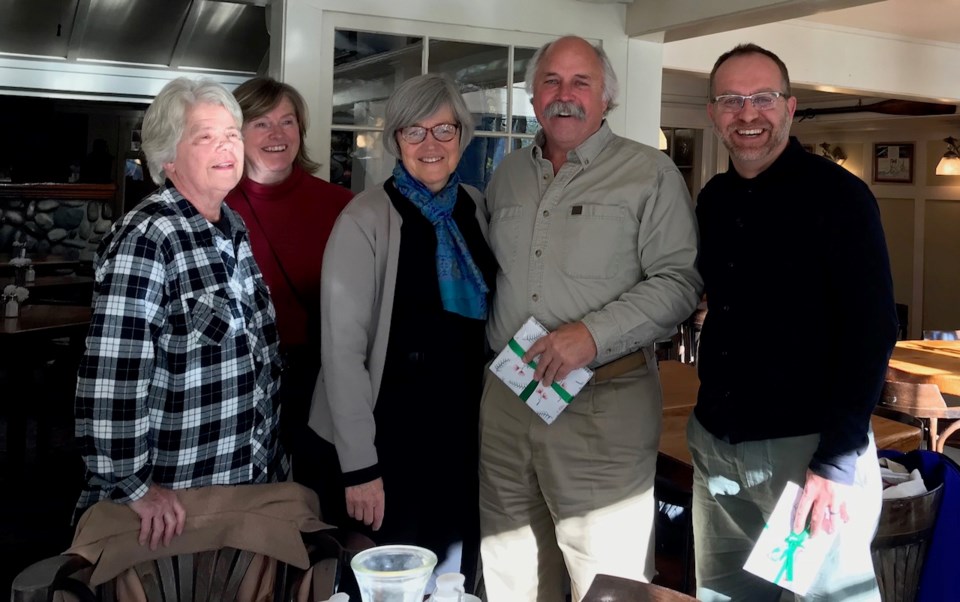Despite the 7,400 per cent land mass (and four million person) difference, the minister of conservation for New Zealand, Eugenie Sage, found some resonant similarities between her home island and Bowen when she stopped here earlier this month.
The Green Party minister from Aukland (Tāmaki Makaurau) was on her way back from a biodiversity convention in Egypt and had a stop-over in Vancouver. Her principal advisor is from the Vancouver area and has family on the island and so in a fortuitous string of events, this year’s citizen of the year and tireless letter-to-mayor-and-council-writer, Bruce Russell mobilized a small faction islanders for a breakfast meeting at Doc Morgan’s.
Mayor Gary Ander, councillors Sue Ellen Fast, Alison Morse and Rob Wynen briefed Sage on Bowen’s environmental efforts.
Sage was particularly interested in Bowen’s land and water management and how the municipality deals with increasing tourism and population, prescient issues in New Zealand.
Morse explained that Bowen is unique as the only municipality in the Island’s Trust, the federation of islands dedicated to preserving the communities and environment in the Salish Sea.
Fast described the Trust as a “blue belt” between Vancouver and Vancouver Island.
Fast, now in her second term as an Islands Trust trustee and newly-elected vice-chair of its executive committee, explained that because Bowen is also part of Metro Vancouver, it was part of Metro’s regional development planning. In this planning, Bowen was usually designated a green space, something of a getaway spot, working in the favour of conservation.
Conversation turned to conservation and Fast noted that being an island protects Bowen from some of the invasive species plaguing the mainland but it suffers from a lack of predators for some pestilent species.
Sage heard that the municipality has little recourse for four-legged pests as wildlife management is provincial jurisdiction, which she met with some surprise.
“Part of conservation in New Zealand is killing,” said Sage.
However, the conservation story that particularly captured Sage was that of Howe Sound’s environmental recovery. How reclamation and environmental work led to cleaner waters. How the herring returned after a group of conservationists noted that the herring had been laying their eggs on creosote-coated pilings (the creosote was to keep the wood from rotting) and were consequently poisoned. The conservationists wrapped the pilings and the herring came back. The larger sea mammals – including whales – followed suit.
“That’s an amazing story,” said Sage, noting that she’d be bringing this learning back to New Zealand.
“It’s been really inspiring,” she told the group.
After the meeting, Sage toured the Grafton Lakes development with the site’s developer, John Reid. Grafton Lakes is a notable development as Reid is setting aside a large portion of the land to be protected, is providing the land for the new Cove Bay water treatment plant and is building a new trail system.
In an email after the visit, Sage’s advisor Kayla Kingdon-Bebb (the one with family on Bowen) said, “Already she’s spoken at length in some meetings on her very positive impression of the various initiatives underway on Bowen Island.
“The minister was particularly taken with John’s approach to the development at Grafton Lake, and also enjoyed her very interesting exchanges with mayor and council. I think she found a kindred spirit in Sue Ellen, as her own journey to political life similarly began with conservation advocacy work.”



